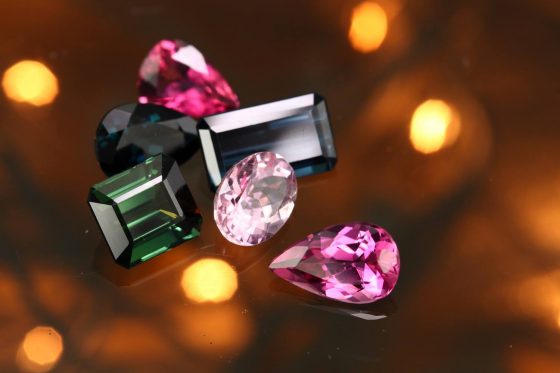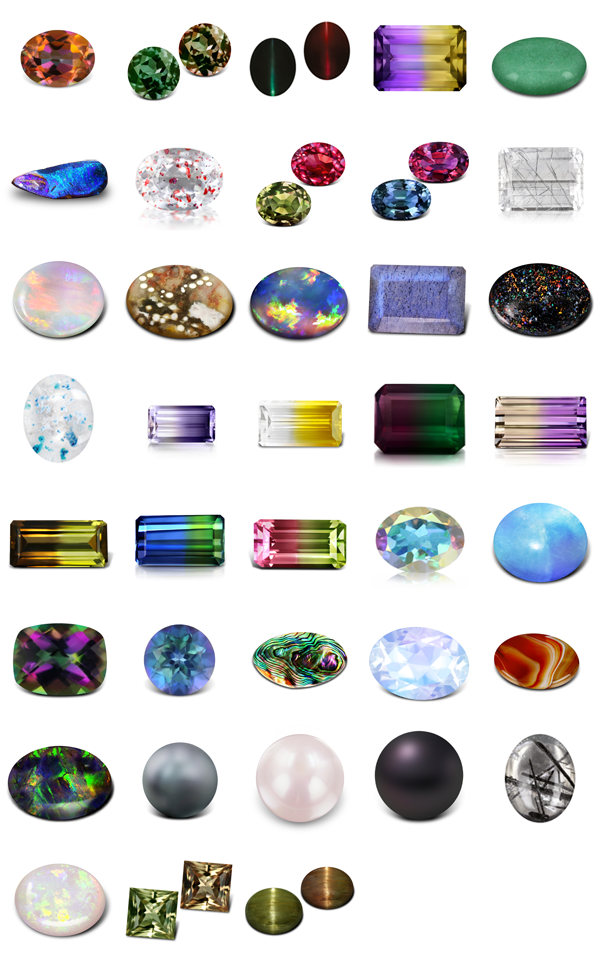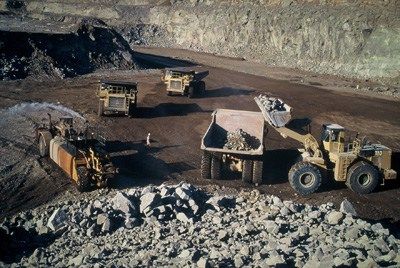How precious stones are formed
Minerals are formed in numerous and diverse environments. Most precious stones are formed in the earth's crust, that is to say the upper layer, at a depth that varies from 4.8 km. at 40 km. Only two varieties of gems are formed in the mantle of the earth, the diamond and the peridot, which represents 80% of the volume of the earth. The mantle consists mainly of molten rock, called magma, with a solid top layer.
Precious materials, except for those of organic origin or manufactured by man, are found in the rocks that form the upper or accessible levels of the earth's crust. This layer, called SIAL, forms the basis for the study of the origin of precious stones.
Most gems are minerals, so the study of the formation of precious stones begins with the study of the origin of the minerals that form them. This study is too broad to cover here so we will focus on considering the areas where we can find the best examples of the most important gemstones.
The most important rubies, sapphires and spinels in the world are found in the northern part of Burma. The Mogok region is one of the most prolific areas in the world in precious stones, except for the diamond that is not found in this area.
The Republic of South Africa has been the most important diamond producer of the century. Its mines, discovered at the end of the 19th century, are the most famous in the world, such as those of Kimberly, De Beers, Wesselton, etc. Today the largest producers of high quality diamonds are Botswana, Russia, South Africa, Angola, Namibia, China and Sierra Leone.
Madagascar is the cradle of an interesting series of gems such as beryl, tourmaline, topaz, kuncite. In the Brazilian districts of Mina Gerais and Minas Novas we find the best specimens of aquamarines and in Colombia (mines of Muzo) the best emeralds in the world.

Volcanic or effusive rocks are those that are formed by the cooling and hardening of the magma. These black rocks are rich in basalt and are commonly referred to as: basalts! But pay attention, there is no basalt in these stones. Here is also quartz, feldspar and feldspatoid.
Due to the great disturbances mentioned above, many particles have dispersed in air, water and ice. These tiny particles have been mobilized by the wind, the tides, the rivers, we find them in the glaciers, in the deltas, in the bottom of the sea, in the sedimentary basins (that seems logical ...) They have been deposited later in the form of successive layers and layers. In this way certain minerals are discovered in different successive strata that have coated each other over time. Therefore, after a while you have a good stack of different minerals! It is also interesting to observe these layers that have traveled through time. They contain valuable information about the duration of geological disturbances. It would be a shame not to be able to affirm what we find: siliceous rocks and carbonated clays, and even iron.

the metamorphic rocks: these are formed suffering from extremely high temperatures and very strong pressures. They are transformations of already existing rocks, it does not matter if of volcanic origin, sedimentary, or metamorphic rocks. As an explanation it seems somewhat barbaric ... I will simply say that it is a mixed of the three categories that have undergone extreme warming under enormous pressure thus producing new rocks with a different alchemy. Among them we will find shales, marbles, gneisses (yes, gneiss ...!) And granites.
And we "gem hunters" have no choice but to go searching among the rocks and deposits to find the secrets within them. Now when I take a gem in my hands, I try to imagine its history. She was born in a soup of elements in fusion, she has been in the bowels of gigantic mountains or has left the bottom of an ocean, she has suffered the thawing of the glaciers and has flown rivers ... and at the end she has slept hidden by thousands of years. She will reveal her beauty and identity to those who have the audacity to go and look for her.
EXTRACTION SYSTEMS
The extraction systems used to obtain precious stones are varied. Deep wells are rare and are used only in obtaining diamonds in Africa, India and Siberia where the world's largest open pit diamond mine is located.
The sapphires and rubies of Burma and some emeralds of Colombia are extracted from short galleries on the slopes of the hills.
As far as the extraction of precious stones in the bed of old rivers is carried out by the method known as "laundries or pleasures", in this way they are extracted, from small excavated wells, sand deposits that later are washed to eliminate the gangue. light and leave the precious material, more dense.
However, in the zones of running water or rivers, the precious stones are obtained by the "sifting" method, that is, by means of baskets or bread boxes where the gravel is deposited and after gentle movements the water current drags the whole gangue the precious material is left in the bread basket.

In the mining extraction process different methods and techniques are used, let's see some of them:
Extraction of open pit mineral: it is done when the deposit can be exploited on the surface; such are the cases of the iron mines at Cerro Bolívar and El Pao or the bauxite mines at Los Pijiguaos in Guayana.
Extraction of mineral from the subsoil: when it comes to digging at a certain depth to extract the mineral, coal is usually extracted in that form.
Extraction by sifting: refers to the search for minerals in the earth or sand, sifting and passing through streams of water as do miners when looking for diamonds or other precious stones.
Pumping extraction: refers to the removal of large quantities of sand from the bottom of rivers to obtain diamonds, other precious stones or gold.
References for more information
https://www.gemselect.com/other-info/gemstone-formation.php
You received a 10.0% upvote since you are not yet a member of geopolis.
To read more about us and what we do, click here.
https://steemit.com/geopolis/@geopolis/geopolis-the-community-for-global-sciences-update-3
If you do not want us to upvote and comment on your posts concerning earth and earth sciences, please reply stop to this comment and we will no longer bother you with our love ❤️